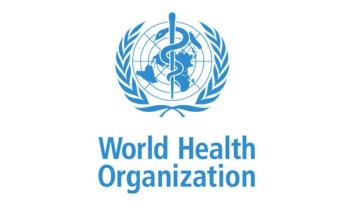
- Contagion, Summer 2025 Digital Edition
- Volume 10
- Issue 2
Using the NARROWS Framework to Improve Antibiotic Stewardship: A Communication Tool for Hospital Clinicians
The NARROWS framework, developed within the IDSA Core Antimicrobial Stewardship Curriculum, provides a structured, behaviorally informed approach to communication that helps stewardship teams address the social, emotional, and cultural factors influencing prescribing decisions in order to optimize antimicrobial use and combat resistance.
Scenarios such as these are commonly encountered by antimicrobial stewardship teams in the hospital setting. Antimicrobial stewardship is a critical component in combating antimicrobial resistance and ensuring the effective use of antimicrobial agents. Crucial to this work is recognition of the factors contributing to prescribing behavior and offering thoughtful communication to influence provider behavior and ensure optimal patient outcomes.
Based on behavioral psychology concepts, the NARROWS mnemonic, developed within the Infectious Diseases Society of America (IDSA) Core Antimicrobial Stewardship Curriculum (available within the IDSA Academy catalog), offers a structured approach to delivering feedback to clinicians to facilitate a more favorable outcome.1
The components of the NARROWS mnemonic are as follows:
N: Name the behavior. Clearly identify the specific prescribing behavior that requires attention.
A: Ask for permission. Seek consent before providing feedback, ensuring the recipient is receptive.
R: Reinforce positive behavior. Acknowledge and commend appropriate prescribing practices to encourage continued adherence.
R: Request a change. Politely suggest modifications to the prescribing behavior when necessary.
O: Offer assistance. Provide support or resources to facilitate the desired change.
W: Wrap up. Conclude the conversation on a positive note, reinforcing collaboration.
S: Summarize. Recap the key points discussed to ensure mutual understanding.
Application of the NARROWS framework to the above scenario is demonstrated here with example dialogue provided by the stewardship pharmacist:
N. Name the Behavior
“I understand that you would like to initiate meropenem for this patient admitted with pneumonia.” This direct observation sets the stage for a focused discussion.
A. Ask for Permission
Seek the clinician’s consent to discuss the prescribing decision. For example, “Would you be open to discussing the choice of antibiotic therapy in this case?” This approach respects the clinician’s autonomy and fosters a collaborative environment.
R. Reinforce Positive Behavior
Acknowledge the clinician’s commitment to patient care. “I appreciate your thorough assessment and proactive approach to treating this patient.” Such reinforcement encourages continued adherence to best practices and recognizes the provider’s interest in caring for their patient.
R.Request a Change
Gently suggest an alternative approach. “Given that this patient has only just been initiated on therapy and does not have specific risk factors for resistant organisms, would you consider continuing the current antibiotics while we wait on cultures and allow him more time to respond to therapy?” This recommendation aligns with evidence-based guidelines but respects provider autonomy in making decisions regarding their patients.
O.Offer Assistance
Provide support to facilitate the proposed change. “I can assist in reviewing the patient’s laboratory results and monitoring for any signs of worsening infection.” Offering assistance demonstrates collaboration and support and can reduce providers’ anxiety about proceeding with the proposed plan.
W.Wrap Up
Conclude the conversation on a positive note. “Thank you for considering this approach. I believe it will contribute to the patient’s recovery and reduce their exposure to unnecessary antimicrobials.”
S.Summarize
Recap the key points discussed. “To summarize, we agreed to continue ceftriaxone and azithromycin and monitor the patient closely while we wait for cultures to return.” This summary reinforces the shared decision-making process.
The research of Julia E. Szymczak, PhD, sheds an important light on the social dynamics that quietly—but powerfully— shape antimicrobial prescribing behaviors among clinicians. Her work reveals that prescribing decisions are often influenced by more than just clinical guidelines: They are deeply embedded in the culture and pressures of health care settings.2
One key factor she identifies is the norm of noninterference—an unspoken rule that discourages clinicians from openly questioning a colleague’s prescribing choices. This norm, while intended to maintain collegiality, can unintentionally create barriers to honest conversations about antimicrobial use, even when improvement is clearly needed.3
Another major influence is the pressure to meet patient expectations and satisfaction metrics. In some cases, providers may prescribe antimicrobials, even when they are not clinically indicated, to avoid disappointing a patient who they perceive expects an antibiotic prescription. This balancing act between evidence-based medicine and customer service can be difficult to navigate. Szymczak also highlights the role of emotion in clinical decision-making. The fear of missing a serious infection—or being blamed for an adverse outcome—can lead providers to err on the side of prescribing or “overtreating to be safe,” as described by Rynkiewich et al.4
Perhaps most challenging is the misperception of antimicrobial overuse. Many clinicians—and many patients— agree that overprescribing is a problem, but they often do not see it as an issue in their practice. This disconnect can make it harder to engage them in stewardship efforts.5,6 Recognizing these social and emotional undercurrents is essential when applying frameworks such as NARROWS in antimicrobial stewardship. By approaching stewardship with empathy and understanding— acknowledging clinicians’ fears, pressures, and perceptions—stewardship professionals can create a more open, collaborative environment where meaningful change is possible.
The IDSA recognized a growing need for stewardship education within the medical community to confront antimicrobial resistance. It identified a lack of consistent, structured training in antimicrobial stewardship, particularly for infectious diseases fellows, the clinicians most expected to lead these efforts.
Although many infectious diseases physicians understand the importance of antimicrobial stewardship in daily practice, few received formal education on how to effectively implement stewardship principles in real-world settings.
In response, the IDSA developed the Core Antimicrobial Stewardship Curriculum, which combines interactive modules, case-based learning, and assessments to engage learners and reinforce key concepts to ensure that the next generation of infectious diseases physicians is not only clinically competent but also prepared to lead the fight against antimicrobial resistance through thoughtful, evidence-based stewardship.
By leveraging communication tools such as the NARROWS mnemonic, antimicrobial stewardship programs can more effectively influence prescribing behaviors and play a critical role in combating the growing threat of antimicrobial resistance.
References
1.IDSA Academy. Accessed May 4, 2025. https://academy.idsociety.org/
2.Szymczak JE, Keller SC, Linder JA. “I Never Get Better Without an Antibiotic”: antibiotic appeals and how to respond. MayoClin Proc. 2021;96(3):543-546. doi:10.1016/j.mayocp.2020.09.031
3.Szymczak JE, Newland JG. The Social Determinants of Antibiotic Prescribing: Implications for the Development and Implementation of Stewardship Interventions. In: Barlam TF, Neuhauser MM, Tamma PD, Trivedi KK, eds. Practical Implementation of an Antibiotic Stewardship Program. Cambridge University Press; 2018:45-62.
4.Rynkiewich K, Uttla K, Hojat L. Instant gratification and overtreating to be safe: perceptions of US intensive care unit pharmacists and residents on antimicrobial stewardship. Antibiotics (Basel). 2022;11(9):1224. doi:10.3390/antibiotics11091224
5.Abbo L, Sinkowitz-Cochran R, Smith L, et al. Faculty and resident physicians’ attitudes, perceptions, and knowledge about antimicrobial use and resistance.Infect Control Hosp Epidemiol. 2011;32(7):714-718. doi:10.1086/660761
6.Szymczak JE, Hayes AA, Labellarte P, et al. Parent and clinician views on not using antibiotics for mild community-acquired pneumonia. Pediatrics. 2024;153(2):e2023063782. doi:10.1542/peds.2023-063782
Articles in this issue
3 months ago
Measles 2025: Looking Back and Moving Forward4 months ago
Contagion Summer 2025 Digital EditionNewsletter
Stay ahead of emerging infectious disease threats with expert insights and breaking research. Subscribe now to get updates delivered straight to your inbox.



























































































































































































































































































